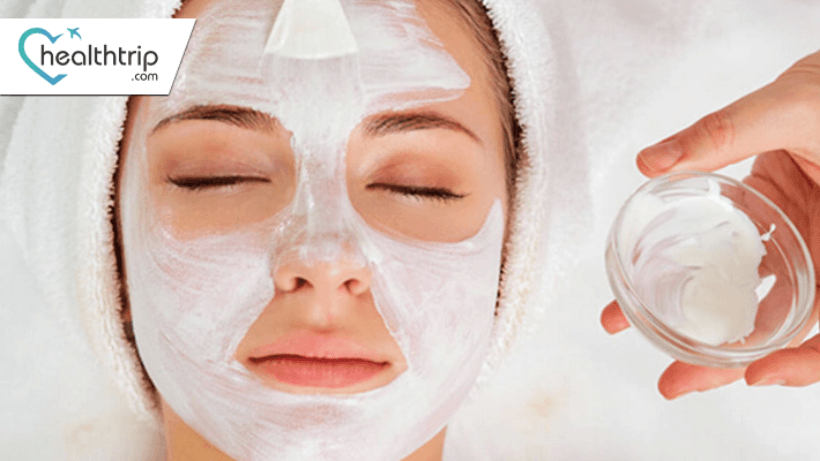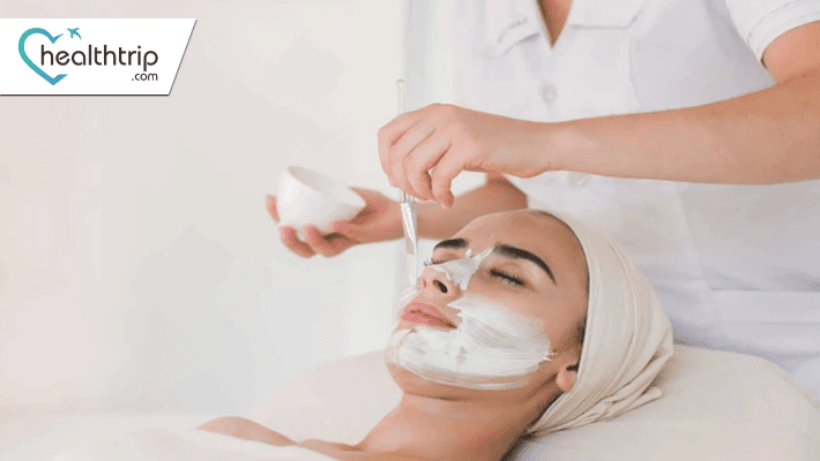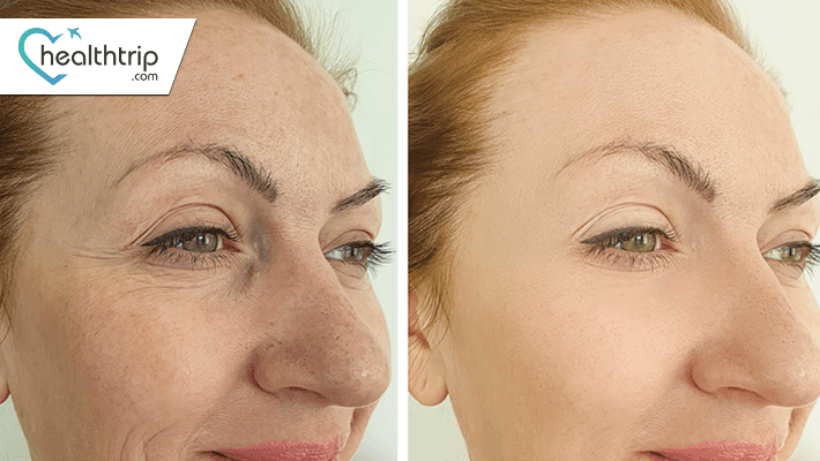
Chemical Peels vs. Laser Treatments: Which is Better for You?
17 Nov, 2023
 Healthtrip Team
Healthtrip TeamWhen it comes to rejuvenating your skin and addressing various skin concerns, you may have heard of two popular options: chemical peels and laser treatments. Both of these procedures are effective ways to improve the texture, tone, and overall appearance of your skin, but they work in different ways and are suited to different skin types and concerns. In this blog, we'll delve into the key differences between chemical peels and laser treatments to help you determine which option might be better for you.
Most popular procedures in India
Chemical Peels
1. Chemical Peel Process:
Wellness Treatments
Give yourself the time to relax
Lowest Prices Guaranteed!

Lowest Prices Guaranteed!
- Chemical Solution Application: Chemical peels are non-surgical skin rejuvenation procedures that involve the careful application of a chemical solution to the skin's surface.
- Types of Chemicals: These solutions contain specific types of acids, such as alpha hydroxy acids (AHAs), beta hydroxy acids (BHAs), or trichloroacetic acid (TCA). The choice of acid depends on the depth of the peel and the specific skin concerns being addressed.
- Controlled Damage: The chemicals cause controlled damage to the top layer of the skin, which is the epidermis. This controlled injury serves as a stimulus for the skin's natural healing process.
2. Skin Concerns Addressed:
- Fine Lines and Wrinkles: Chemical peels can help reduce the appearance of fine lines and wrinkles, especially when they are superficial or moderate in depth.
- Uneven Skin Tone and Texture: Peels can improve the skin's texture by smoothing out rough areas and minimizing the appearance of enlarged pores.
- Sun Damage and Age Spots: Chemical peels are effective in reducing the signs of sun damage, including age spots, sunspots, and freckles, by encouraging the shedding of damaged skin cells.
- Acne Scars: Certain types of chemical peels, particularly medium-depth or deep peels, can improve the appearance of acne scars by promoting collagen production and skin regeneration.
- Hyperpigmentation and Melasma: Chemical peels can target hyperpigmentation issues, such as melasma (a skin condition characterized by brown or gray patches on the face). Superficial peels may be used for milder cases, while deeper peels may be considered for more stubborn pigmentation problems.
Read On : Transform Your Skin: Conditions Treated with Chemical Peels (healthtrip.com)
3. Downtime:
- Superficial Peels (Light Peels): These peels typically have minimal downtime. After the procedure, patients may experience some redness and mild flaking of the skin. Most people can return to their regular activities within a few days, and makeup can be used to conceal any residual redness or peeling.
- Medium-Depth Peels: Medium-depth chemical peels may require a longer recovery period, usually lasting one to two weeks. During this time, the skin may peel more noticeably, and redness may persist.
- Deep Peels: Deep chemical peels involve the most extended downtime, often lasting several weeks. Patients can experience redness, swelling, and significant peeling as the skin undergoes a more substantial rejuvenation process.
4. Suitability for Different Skin Types:
- Chemical peels can be customized to suit different skin types and concerns. Superficial peels are generally safe for a wide range of skin tones and types.
- Individuals with very dark skin tones should exercise caution when considering medium-depth or deep chemical peels, as there is a higher risk of post-inflammatory hyperpigmentation (PIH), which can result in uneven skin pigmentation.
5. Chemical Peels cost :
Chemical peels generally offer a cost-effective option for skincare treatments. The overall cost can vary depending on the type of peel chosen (superficial, medium-depth, or deep), the extent of the treatment area, and location. Superficial peels are typically the most affordable, followed by medium-depth peels, while deep peels tend to be the most expensive.
Laser treatments
Laser treatments are a popular choice for addressing various skin concerns. Let's explore the details of how they work, the skin concerns they can address, the associated downtime, and considerations for different skin types:
1. Laser treatments process
Laser treatments harness the power of focused light beams to target specific skin issues. There are two main types of lasers used in dermatology:
- Ablative Lasers: These lasers work by removing the top layer of the skin, which is the epidermis. This controlled removal of skin prompts the body to initiate a healing response, leading to collagen production and new skin growth. Ablative lasers are often used for more significant skin rejuvenation.
- Non-Ablative Lasers: Non-ablative lasers, on the other hand, penetrate the skin without causing damage to the surface. Instead, they heat the underlying tissue, stimulating collagen production and improving skin tone and texture. Non-ablative lasers are a milder option with less downtime.
Must read : The Psychological Benefits of Chemical Peels (healthtrip.com)
2. Skin Concerns Addressed:
Laser treatments can effectively target a wide range of skin concerns, making them a versatile option for skin rejuvenation. Some of the skin issues that laser treatments can address include:
- Fine Lines and Wrinkles: Laser treatments can reduce the appearance of fine lines and wrinkles by stimulating collagen production and improving skin elasticity.
- Acne Scars: Laser therapy can help smooth out and improve the appearance of acne scars by promoting the growth of healthier skin.
- Vascular Issues: Certain lasers are designed to target vascular issues like broken blood vessels and rosacea, reducing redness and visible veins.
- Pigmentation Problems: Laser treatments are effective in treating pigmentation problems such as sun spots, age spots, and freckles by breaking down excess melanin in the skin.
- Tattoo Removal: Some lasers, specifically Q-switched lasers, can break down tattoo ink particles, allowing the body to naturally eliminate them.
3. Downtime:
The amount of downtime associated with laser treatments can vary significantly based on the type of laser used and the depth of treatment:
- Non-Ablative Laser Treatments: Non-ablative lasers often have minimal downtime. Patients may experience some redness and swelling immediately after the procedure, but these typically subside within a few days.
- Ablative Laser Treatments: Ablative lasers can have more substantial downtime. Patients may experience redness, swelling, and peeling for several days to a week or more, depending on the depth of the treatment.
4. Skin Types:
Laser treatments can be customized to suit various skin types and tones, making them a versatile option. However, it's essential for individuals with darker skin tones to consult with a dermatologist or laser specialist before undergoing laser treatment. This consultation helps determine the most appropriate laser for their needs and reduces the risk of unwanted pigmentation changes, such as post-inflammatory hyperpigmentation (PIH).
In summary, laser treatments are effective for addressing a wide range of skin concerns, but the choice of laser and the associated downtime can vary. Consultation with a skincare professional is crucial to determine the best laser treatment option based on individual skin concerns, skin type, and desired outcomes.
5. Laser treatments cost
Laser treatments vary in cost, with factors like the type of laser used (non-ablative or ablative), the depth of the treatment, and the treatment area influencing the price. Non-ablative laser treatments are often moderately priced, while ablative lasers tend to be the most expensive option.
Choosing the Right Option for You:
- Skin Type and Concerns: Your skin type and specific concerns play a crucial role in determining which treatment is better for you. While both chemical peels and laser treatments are versatile, a consultation with a dermatologist or skincare specialist will help determine the best approach for your unique needs.
- Downtime: Consider your availability for downtime. If you have a busy schedule and can't afford extended recovery time, a superficial chemical peel or a non-ablative laser treatment may be more suitable.
- Cost: Cost can also be a factor in your decision. Chemical peels are generally more budget-friendly, while laser treatments can be more expensive, especially for multiple sessions.
- Consult a Professional: Before making a decision, it's crucial to consult a qualified skincare professional. They will assess your skin, discuss your goals, and recommend the most appropriate treatment option based on your individual needs.
Explore a world of beauty and wellness with our dermatology and cosmetology treatments at HealthTrip. Your journey to radiant skin begins here!
Visit for info: Dermatology & Cosmetology Treatment in India - Cost, Hospitals, Doctors | HealthTrip
Both chemical peels and laser treatments offer effective solutions for improving your skin's appearance and addressing various skin concerns. The choice between the two should be based on your skin type, specific concerns, available downtime, and budget. A personalized approach to skincare will yield the most satisfying results, so make sure to discuss your options thoroughly with a qualified professional. Whether you opt for a chemical peel or a laser treatment, the goal is the same: to achieve healthier, more radiant skin that makes you feel confident and rejuvenated.
Most popular wellness packages
Related Blogs

Best hospitals for Chemical Peel in Thailand
Dreaming of achieving glowing, youthful skin in the heart of

Are Chemical Peels Safe? Let's Separate Myths from Facts
Chemical peels have been used for years to make skin

Expert Answers to Your Common Questions on chemical peels
Combining chemical peels with other cosmetic procedures like laser treatments

Dark Lips Treatment Cost in India
IntroductionDark lips, also known as hyperpigmented lips, can be a

Innovative Techniques in Chemical Peeling: What's New?
Chemical Peels: A Journey from Traditional to AdvancedChemical peeling has

Chemical Peels: What to Expect Before, During, and After
Chemical peels have emerged as a cornerstone in the realm










